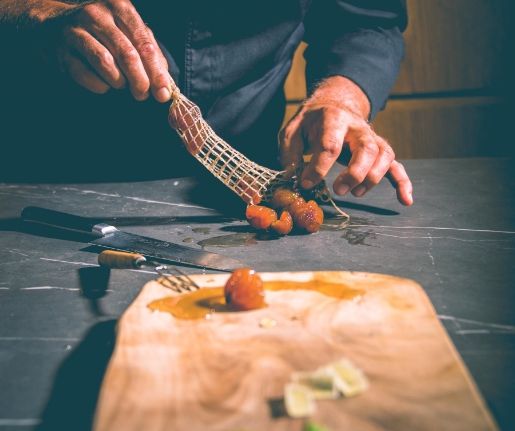
1° Master the manufacturing know-how
By respecting the right processes in order to obtain balanced and stable recipes over time.
Scope of application
Chocolate factory
Ganache, pralines, Giandujas, bars, liquor candies, spreads.Confectionery
Dragées, pralines, caramels (to be poured or cut), Fudge, gums and gummies, fruit pastes, jams, chewing paste, marshmallows, nougats, almond pastes (walnuts, pecans), candy sugars, candied fruits.
2° Developing original recipes
By creating, with you and for you, the products that will set your production apart.
Scope of application
All chocolate products, all sugar confectionery
3° Improve your production
By respecting the chemistry of the ingredients and the balance of the recipes.
Scope of application
- Mixing, grinding, refining and conching.
- Windfall.
- Casting.
- Coating.
- Tempering.
- Moulding.
- Tabling
- Sugar coating.
- Retention periods.
- Regulation.

4° Setting up organisational processes
By optimising the management of space, people and equipment.
Scope of application
Chocolate factory
- The different materials and their uses.
- Analysis of task sequencing.
- Management of storage facilities.
- The Quantara software.
- The organisation of the laboratory.
- Recommendation of equipment and production tools

5° Audit your company
By optimising the management of space, people and equipment.
Scope of application
- Chocolate factory
- Confectionery
- Biscuit factory

6° Train your employees at home
By making each actor aware of the quality of your processes (1 to 4 people).
Scope of application
- Chocolate factory
- Confectionery
- Biscuit factory


Pro QuestionsBleaching: a frequently encountered problem
Many chocolatiers are convinced of the importance of proper tempering of the coating, but sometimes discover that certain areas of the chocolate appear to be formed by small whitish crystals.
It is worth remembering that the quantity of crystals formed during the pre-crystallisation (tempering) stage is inevitably linked to the cooling conditions. But these are determined by two important factors: time and temperature. Both can be decisive in the formation of these whitish parts, it will be important to analyse which one. Storing the products too quickly in the cold after the tunnel can also cause post-crystallisation.
These problems appear in the same way with pralines. If not tempered, a praline will take a long time to crystallise and will tend to form wild crystals, sometimes after several weeks...
As the untempered cocoa butter in the praline is mixed with hazelnut and almond oil, the migration of liquid oils that are not trapped in a matrix of cocoa butter crystals will tend to migrate more quickly and cause the well-known fat bleaching.
Tempering is a rigorous process requiring constant attention and technical knowledge.




